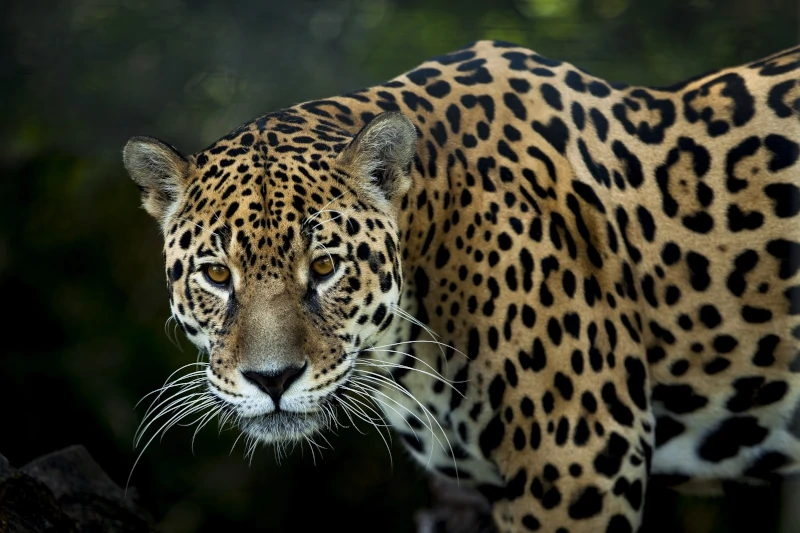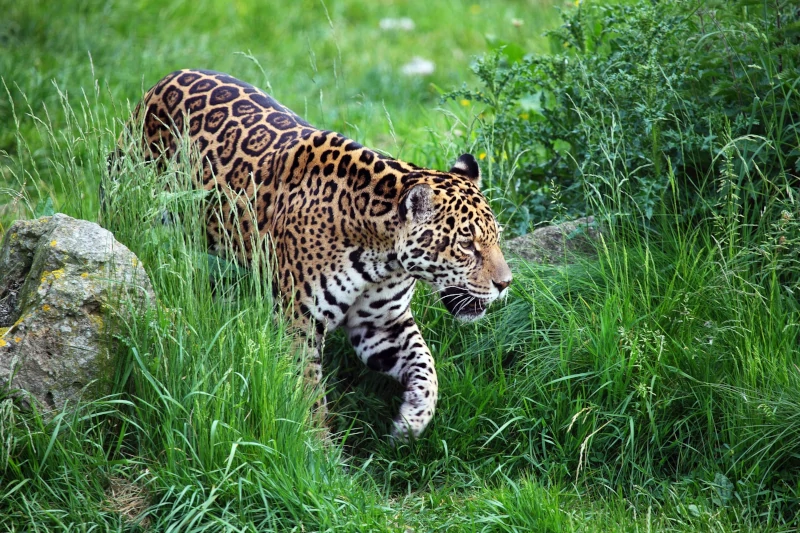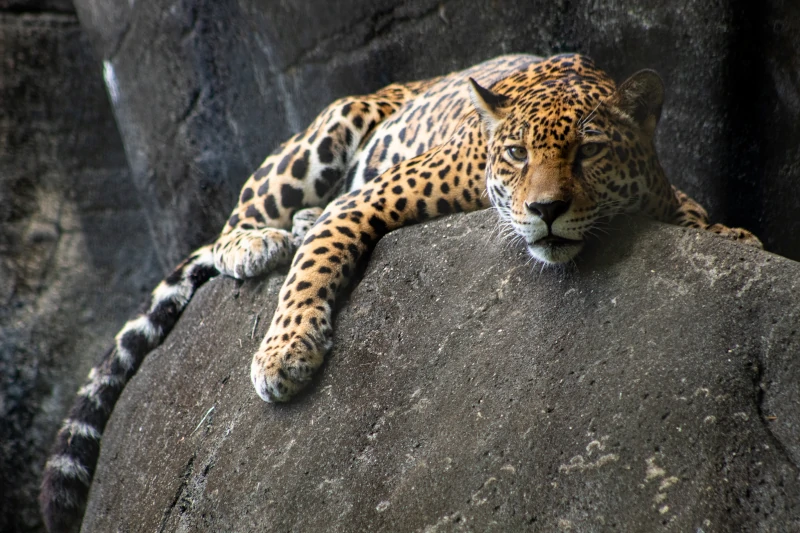Venturing deep into the lush and mysterious heart of the Amazon rainforest, one may encounter a magnificent and elusive creature that has captured the imagination of humankind for centuries: the Jaguar. Known for its incredible power, agility, and striking appearance, this awe-inspiring big cat reigns supreme as the apex predator in its realm.
In this article, we’ll embark on a fascinating journey to explore the captivating world of the jaguar, uncovering the unique characteristics and behaviors that make this feline a true marvel of the Amazon. Join us as we delve into the secretive life of this remarkable big cat, and learn about the vital role it plays in maintaining the delicate balance of its unparalleled ecosystem.
The jaguar is a true embodiment of enigmatic beauty, with its distinct appearance and powerful build. This big cat, found in areas like Manu National Park, is truly awe-inspiring. Known for its stocky and muscular physique, it can weigh up to 96 kg (211 pounds). Males are typically larger than females.
Their coats boast a stunning golden-yellow base color. The characteristic black spots, called rosettes, adorn their bodies. The rosettes are unique to each jaguar, much like human fingerprints. These markings also serve as excellent camouflage. Some jaguars, known as melanistic, have black coats, earning them the nickname “black panther.”
One of the jaguar’s most notable features is its powerful jaw. Possessing the strongest bite force among big cats, it can pierce a skull with ease. This adaptation allows them to hunt efficiently, even tackling armored prey like turtles.
Another remarkable adaptation is their eyesight. Jaguars have excellent night vision, which aids them in hunting during twilight hours. Their ears are equally impressive, allowing them to detect the faintest sounds of potential prey.
These big cats are also skilled swimmers. Their powerful paws enable them to navigate waterways with ease, expanding their hunting grounds. Jaguars are known to take down prey both in water and on land, showcasing their adaptability.
The jaguar’s tail is another fascinating feature. Measuring up to 1 meter (30 inches) long, it helps maintain balance and maneuverability. This proves particularly useful when navigating the dense Amazon rainforest.
Jaguars are well-adapted to their environment, with physical features that have evolved for optimal survival. From their striking coat to their powerful jaws, each characteristic serves a purpose. The jaguar is indeed a prime example of the beauty and adaptability of nature.

As a top predator, the jaguar’s diet is essential in maintaining the balance of the ecosystems it inhabits. Found in places like jungles in Peru, their diet consists mainly of medium to large-sized prey. This includes species like capybaras, deer, tapirs, and even caimans. However, they are opportunistic feeders and won’t hesitate to prey on smaller animals.
Jaguars are ambush predators, relying on stealth and camouflage to surprise their prey. They prefer dense forests, which provide cover and concealment. Their rosette-patterned coats are perfect for blending into the shadows.
These big cats are solitary hunters, stalking their prey patiently and silently. Once within striking distance, they launch a powerful attack. Their short bursts of speed allow them to cover ground quickly, catching their targets off guard.
The jaguar’s hunting technique differs from other big cats. They utilize their powerful jaws to deliver a lethal bite. Targeting the skull or neck, they can instantly kill or immobilize their prey. This method is efficient, ensuring a swift and effective kill.
Jaguars are also known to hunt in water, showcasing their adaptability. Their strong swimming skills allow them to catch fish, turtles, and even caimans. In these cases, they use their strong forelimbs to grapple and subdue their aquatic prey.
Their hunting prowess is not limited to terrestrial pursuits. Jaguars have been observed climbing trees to capture monkeys, sloths, and birds. Their agility and power make them formidable hunters in the canopy.
The jaguar’s role as an apex predator is vital to its ecosystem. By keeping prey populations in check, it ensures a healthy balance in its habitat. The jaguar’s impressive hunting skills and adaptability make it a true master of its domain.

Jaguars inhabit a variety of environments, including rainforests, swamps, grasslands, and deciduous forests. The Amazon Basin remains their stronghold, providing ample resources and cover. Jaguars prefer dense, remote habitats where human presence is minimal.
These elusive big cats are solitary creatures, leading secretive lives in the shadows. They only interact during mating season or when a mother cares for her cubs. Males are particularly territorial, marking their area with urine or claw marks on trees.
Though solitary, they communicate through vocalizations, such as growls, roars, and purrs. These sounds convey messages about mating, territory, and distress. Jaguars are mainly nocturnal, resting during the day and hunting at night.
Unfortunately, jaguars face numerous threats, including habitat loss, poaching, and human conflict. Deforestation for agriculture and infrastructure fragments their habitat, limiting resources and breeding opportunities. Illegal hunting for their skins and body parts also contributes to their decline.
Conservation efforts focus on habitat preservation and reducing human-wildlife conflicts. Protected areas, like national parks, provide safe havens for jaguars. Community-based initiatives educate locals on coexistence, reducing retaliatory killings due to livestock predation.
Ecotourism can play a vital role in jaguar conservation. It raises awareness, supports local economies, and promotes habitat protection. By visiting wildlife reserves, travelers contribute to the preservation of these magnificent creatures and their habitats.
In conclusion, the mysterious jaguar is an essential part of the Amazon ecosystem. As you learn about their habitat, social behavior, and conservation efforts, consider visiting Machu Picchu and the Sacred Valley of the Incas. By exploring these breathtaking locations, you’ll deepen your appreciation for the rich natural and cultural heritage of South America.

Do not hesitate to give us a call. We are an expert team and we are happy to talk to you.
+51 998 134 635
info@perujungletrips.com
